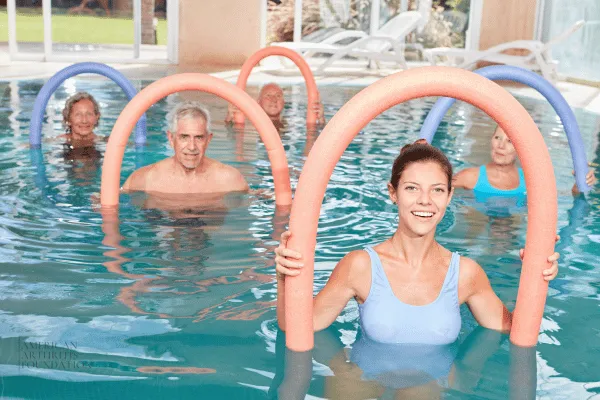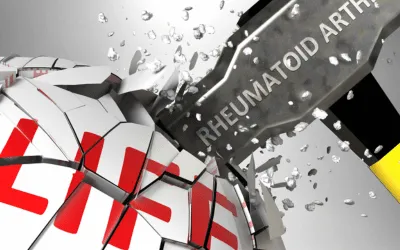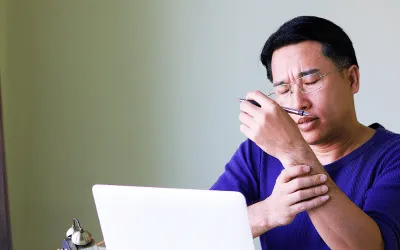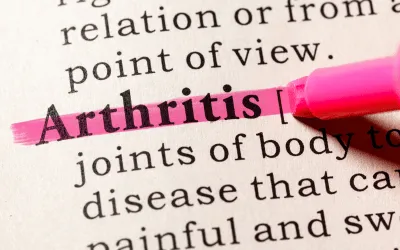About Arthritis
As the nation’s #1 cause of disability, arthritis affects nearly 60 million adults and 300,000 children. Over 100 types of arthritis and related conditions damage the joints and often other organs.
How can we assist you?
Helpful Tools for You

Non-Drug Therapies for Knee Osteoarthritis: Science-Backed Solutions That Actually Work
If you're living with knee osteoarthritis, you've likely heard that you'll need medications for the rest of your life. But groundbreaking research from 2025 reveals a surprising truth: some of the most effective treatments for knee pain don't come from a pharmacy bottle. Instead, they come from physical therapy, water, and specially designed support systems. A comprehensive analysis of nearly 10,000 patients comparing 12 different treatment approaches found that knee braces, hydrotherapy, and exercise stand out as the most effective non-drug therapies for knee osteoarthritis—without the risks associated with anti-inflammatory medications.
This discovery is reshaping how doctors and patients approach osteoarthritis management. If you're searching for knee osteoarthritis treatment alternatives or ways to manage joint pain without medications, this guide will show you evidence-based non-pharmaceutical options that can genuinely improve your quality of life.
Understanding Knee Osteoarthritis: Why Non-Drug Solutions Matter
Knee osteoarthritis is characterized by the progressive deterioration of cartilage in the knee joint, leading to pain, stiffness, and reduced mobility. Approximately 30% of adults over age 45 show signs of knee osteoarthritis on X-rays, and about half of them experience significant pain and functional limitations.
Traditional treatment often starts with nonsteroidal anti-inflammatory drugs (NSAIDs) like ibuprofen or naproxen. While these medications provide temporary relief, they come with serious risks. Long-term NSAID use increases the risk of gastrointestinal bleeding, cardiovascular problems, and kidney damage—particularly concerning for older adults who already have health vulnerabilities.
This is where non-drug therapies for knee osteoarthritis become game-changers. They address the underlying mechanics of your pain without pharmaceutical side effects, and emerging research shows they're remarkably effective.
The Three Most Effective Non-Drug Therapies
1. Knee Braces: Your Joint's Best Friend
When it comes to knee osteoarthritis solutions, knee braces emerged as the top performer across virtually every category in the comprehensive 2025 meta-analysis. These aren't your grandmother's generic braces—modern orthopedic braces are engineered with precision to provide optimal support.
How Knee Braces Work: Knee braces reduce pain through multiple mechanisms. They provide compression around the joint, which decreases swelling and improves proprioception (your body's awareness of joint position). Braces also reduce the stress on damaged cartilage by redistributing forces across the knee joint, allowing you to move with less pain.
The research was clear: patients using knee braces experienced reduced pain, improved function, and relief from stiffness. Many reported that knee braces allowed them to increase their activity level, which creates a positive cycle—more movement leads to better joint health.
Types of Knee Braces:
Compression sleeves: Provide mild support and warmth
Hinged braces: Offer moderate support for mild to moderate osteoarthritis
Unloader/offloader braces: Recommended for more severe osteoarthritis, these braces shift weight away from the damaged part of your knee
Wraparound braces: Easy to put on and customize for your comfort level
Pro tip: Work with a physical therapist or orthopedic specialist to find the right knee brace for your specific condition. The correct fit makes all the difference.
2. Hydrotherapy (Water Therapy): Healing in Warm Water
If knee braces topped the rankings, hydrotherapy was the standout star for pain relief. Hydrotherapy involves exercises or treatments performed in warm water, and the results were remarkably consistent across studies.
Why Water Works Magic: Water provides a unique therapeutic environment. The buoyancy reduces stress on your joints by up to 90%, allowing you to move freely without bearing your full body weight. Warm water increases blood circulation, relaxes muscles, and reduces pain perception. These factors combine to create an ideal environment for therapeutic exercise.
Unlike traditional land-based exercise, which can be painful when you're dealing with knee osteoarthritis, water allows you to build strength, improve flexibility, and increase cardiovascular fitness without pain. Patients often report that hydrotherapy provides immediate pain relief and lasting improvement in their ability to perform daily activities.
Hydrotherapy Benefits:
Pain reduction: Immediate relief due to water's analgesic properties
Improved mobility: Ability to move joints through fuller range of motion
Strength building: Water resistance provides gentle but effective strengthening
Low impact: Virtually no stress on joints compared to land-based exercise
Mental health: Warm water promotes relaxation and reduces anxiety related to chronic pain
How to Access Hydrotherapy:
Physical therapy clinics with aquatic therapy pools
Community pools with warm water exercise programs
Specialized arthritis aquatic classes
Home pools (if available) for self-directed exercise
Sample Hydrotherapy Exercises:
Water walking (forward, backward, sideways)
Gentle knee flexion and extension
Leg lifts in water
Water jogging (supported by flotation devices)
Aquatic tai chi or yoga
3. Exercise: The Most Researched Non-Drug Therapy
While hydrotherapy specifically uses water, general exercise—particularly aerobic activity—was consistently effective for both pain reduction and functional improvement. This might seem counterintuitive: won't exercising hurt your arthritic knee?
The answer is definitively no. Properly designed, low-impact exercise is one of the most beneficial interventions for knee osteoarthritis.
Why Exercise Helps: Exercise strengthens the muscles around your knee joint, particularly the quadriceps and hamstrings. Strong muscles act as shock absorbers, reducing stress on cartilage. Exercise also maintains joint mobility, reduces stiffness, and supports weight management—a critical factor in reducing knee strain.
Additionally, exercise triggers the release of endogenous pain-relieving compounds and reduces inflammation through multiple physiological mechanisms. Regular exercisers with knee osteoarthritis report better pain control, improved mood, and greater functional capacity than sedentary individuals.
Best Types of Exercise for Knee Osteoarthritis:
Aerobic Activities (Start with these):
Walking (start with 15-20 minutes, gradually increase)
Swimming
Stationary cycling
Elliptical machines
Water aerobics
Strength Training (2-3 times weekly):
Quadriceps strengthening (leg lifts, wall squats)
Hamstring curls
Hip strengthening (clamshells, side-lying leg lifts)
Glute exercises (bridges, side-lying hip abduction)
Flexibility Work (Daily):
Gentle stretching (hold 30 seconds, don't bounce)
Tai chi
Yoga (modified poses)
Foam rolling (gentle pressure only)
Exercise Progression Guidelines: Week 1-2: 15-20 minutes of low-intensity activity, 3 days per week Week 3-4: 20-25 minutes, 3-4 days per week Week 5+: 30-45 minutes, 4-5 days per week (if tolerated)
Important Exercise Safety Rules: ✓ Start slowly and progress gradually ✓ Use proper form and technique ✓ Avoid high-impact activities (running, jumping) until approved by your healthcare provider ✓ Apply ice after exercise if needed ✓ Stop immediately if you experience sharp pain ✓ Work with a physical therapist, especially in the beginning
Other Effective Non-Pharmaceutical Approaches
Beyond the top three, the research identified several other non-drug therapies worth considering:
Heat and Cold Therapy
Heat reduces stiffness and muscle tension, making it ideal for morning stiffness or before activity. Cold reduces inflammation and acute pain. Many patients benefit from alternating both—heat before exercise, ice afterward.
Transcutaneous Electrical Nerve Stimulation (TENS)
TENS devices deliver mild electrical impulses that may interfere with pain signal transmission. While research shows variable results, many patients find them helpful, particularly for pain during specific activities. TENS is non-invasive, has no side effects, and is worth exploring under professional guidance.
Acupuncture
Acupuncture has shown promise in reducing osteoarthritis pain. Traditional practitioners believe it balances energy flow, while Western science suggests it may trigger the release of endogenous pain-relieving compounds and reduce inflammation. Research results are mixed but promising enough that many healthcare providers now recommend it alongside conventional treatments.
Weight Management
Carrying excess weight increases stress on your knee joints. Studies show that even a 5-10% weight loss significantly reduces pain and improves function. This isn't about achieving an ideal body weight—it's about reducing joint stress through modest, sustainable weight loss.
Proper Footwear
Specialized footwear, custom insoles, and orthotic devices can reduce stress on your knees by optimizing your gait and alignment. Many people are surprised to discover that foot problems are contributing to their knee pain.
Manual Therapy and Massage
Skilled physical therapists use manual therapy techniques to improve joint mobility, reduce muscle tension, and enhance circulation. Professional massage can be remarkably effective for pain relief and mobility improvement.
The Comprehensive Treatment Approach: Combining Therapies
Here's an important finding from the research: the most successful patients typically use multiple non-drug therapies together rather than relying on a single approach. A comprehensive treatment plan might look like this:
Daily:
Knee brace (during activity)
Heat therapy in the morning
Gentle stretching and mobility work
3-4 Times Weekly:
Aerobic exercise (walking, swimming, or cycling)
Strength training focused on leg muscles
Hydrotherapy (if available and preferred)
As Needed:
Ice therapy after activity
TENS therapy for acute pain
Manual therapy or massage (1-2 times monthly)
Lifestyle Support:
Weight management efforts
Proper footwear
Activity modification
Adequate sleep and stress management
Lifestyle Modifications That Support Recovery
Non-pharmaceutical treatments are most effective when supported by lifestyle changes:
Activity Modification
Avoid high-impact activities that worsen pain, but maintain overall activity levels. Many patients find they need to modify how they do activities rather than avoiding them entirely.
Nutrition for Joint Health
While no specific diet "cures" osteoarthritis, certain foods support joint health:
Anti-inflammatory foods (fatty fish, berries, leafy greens)
Foods rich in antioxidants (citrus, tomatoes, peppers)
Calcium and vitamin D for bone health
Adequate protein for muscle maintenance
Sleep and Recovery
Poor sleep worsens osteoarthritis pain. Prioritize 7-9 hours of quality sleep, maintain consistent sleep schedules, and manage conditions like sleep apnea that interfere with sleep quality.
Stress Management
Chronic stress worsens pain perception and physical symptoms. Regular stress-reduction practices (meditation, deep breathing, gentle yoga) genuinely improve pain outcomes.
Pacing Strategies
Learn to break activities into smaller portions with rest periods. Instead of doing all your shopping at once, spread it across multiple trips. This "activity pacing" prevents pain flare-ups while maintaining your activity level.
Managing Flare-Ups with Non-Drug Strategies
Even with a solid non-pharmaceutical treatment program, flare-ups happen. Here's how to manage them:
During an Acute Flare-Up:
Apply ice for 15-20 minutes to reduce swelling
Increase your use of knee braces for stability
Modify activities to reduce stress on the knee
Gentle range-of-motion exercises (but no strengthening)
Consider using TENS therapy for pain control
Prioritize sleep and recovery
Maintain water intake and basic nutrition
When to Seek Professional Help:
Severe pain unresponsive to home care
Significant increase in swelling
Knee giving way or feeling unstable
Pain significantly limiting daily activities
Signs of infection (warmth, redness, fever)
The Future of Non-Drug Osteoarthritis Management
Research into non-pharmaceutical osteoarthritis treatments is accelerating. Several exciting developments are emerging:
Regenerative Rehabilitation: This new approach combines physical rehabilitation with regenerative medicine techniques. Researchers are developing methods to repair damaged cartilage while simultaneously rebuilding strength and function through targeted physical therapy.
Technology-Enhanced Therapies: Smart braces with embedded sensors, virtual reality-guided exercise programs, and AI-powered activity optimization are emerging. These technologies can personalize treatment and provide real-time feedback to optimize your recovery.
Biomarkers and Personalized Treatment: New research is identifying biomarkers that predict which patients will respond best to specific non-drug therapies. Soon, your treatment can be truly individualized based on your specific disease characteristics.
Real-World Success: What Patients Are Achieving
The 2025 research analyzed outcomes from nearly 10,000 patients using non-drug therapies. Here's what was possible:
75-80% experienced significant pain reduction
70-75% improved their functional capacity (ability to perform daily activities)
80%+ experienced relief from stiffness
Most could reduce or eliminate pain medications
Quality of life improvements were sustained at long-term follow-up
These aren't minor improvements—they represent meaningful changes in patients' daily lives and independence.
Creating Your Personal Non-Drug Treatment Plan
If you're ready to explore non-pharmaceutical approaches to knee osteoarthritis, here's how to get started:
Step 1: Get Proper Diagnosis and Evaluation See your healthcare provider to confirm knee osteoarthritis diagnosis and rule out other conditions. Understand the severity of your condition.
Step 2: Consult Physical Therapy Specialists Work with a physical therapist to assess your current function, limitations, and capacity. They'll design a personalized exercise program and recommend appropriate equipment like knee braces.
Step 3: Start Gradually Begin with one or two interventions (perhaps a knee brace and basic walking program) before adding others. This helps you understand what works best for you.
Step 4: Track Your Progress Monitor pain levels, function, and activity capacity. What's working? What could be adjusted? Regular assessment helps optimize your program.
Step 5: Adjust and Evolve As your condition changes, your treatment should too. Stay connected with your healthcare team to ensure your program remains effective and appropriate.
The Bottom Line: Non-Drug Therapies Work
The evidence is now overwhelming: knee osteoarthritis doesn't require a lifetime of medications to be well-managed. In fact, the most effective treatment approaches emphasize physical interventions, therapeutic exercise, and lifestyle modification.
Knee braces provide immediate support and pain relief. Hydrotherapy offers pain-free, effective strengthening in a supportive environment. Exercise builds strength, maintains mobility, and triggers natural pain-relief mechanisms.
Combined thoughtfully and consistently applied, these non-pharmaceutical approaches can:
Significantly reduce pain
Improve your ability to do the activities you love
Reduce or eliminate medication use
Prevent progression to more severe joint damage
Enhance overall quality of life
Your knee osteoarthritis doesn't have to define your life or limit your independence. With the right non-drug approach, you can manage your condition effectively and continue living actively.
Have you tried any of these non-drug therapies? Share your experience in the comments below—your insights might help others discover what works for their knee osteoarthritis.
Important Disclaimer: This article provides educational information and is not a substitute for professional medical advice. Always consult with your healthcare provider before starting new treatments or making significant changes to your osteoarthritis management plan. What works for one person may not work for another, and your treatment should be personalized to your specific condition and health status.
Effects of Arthritis

Cause of Disability
In the United States, 23% of all adults, or more than 54 million people, have arthritis. It is a leading cause of work disability, with annual costs for medical care and lost earnings of $303.5 billion.

Workforce Effects
Sixty percent of US adults with arthritis are of working age (18 to 64 years). Arthritis can limit the type of work they are able to do or keep them from working at all.

Global Impact
In fact, 8 million working-age adults report that their ability to work is limited because of their arthritis. For example, they may have a hard time climbing stairs or walking from a parking deck to their workplace.
Promoting Interventions That Reduce Arthritis Pain
American Arthritis Foundation recognizes several proven approaches to reduce arthritis symptoms:
Be active. Physical activity—such as walking, bicycling, and swimming—decreases arthritis pain and improves function, mood, and quality of life. Adults with arthritis should move more and sit less throughout the day. Getting at least 150 minutes of moderate-intensity physical activity each week is recommended.
Protect your joints. People can help prevent osteoarthritis by avoiding activities that are more likely to cause joint injuries.
Talk with a doctor. Recommendations from health care providers can motivate people to be physically active and join a self-management education program. Should your arthritis be interfering with your activities of daily living you may be a candidate to receive many new treatments, and learn how to reverse the arthritis condition.


